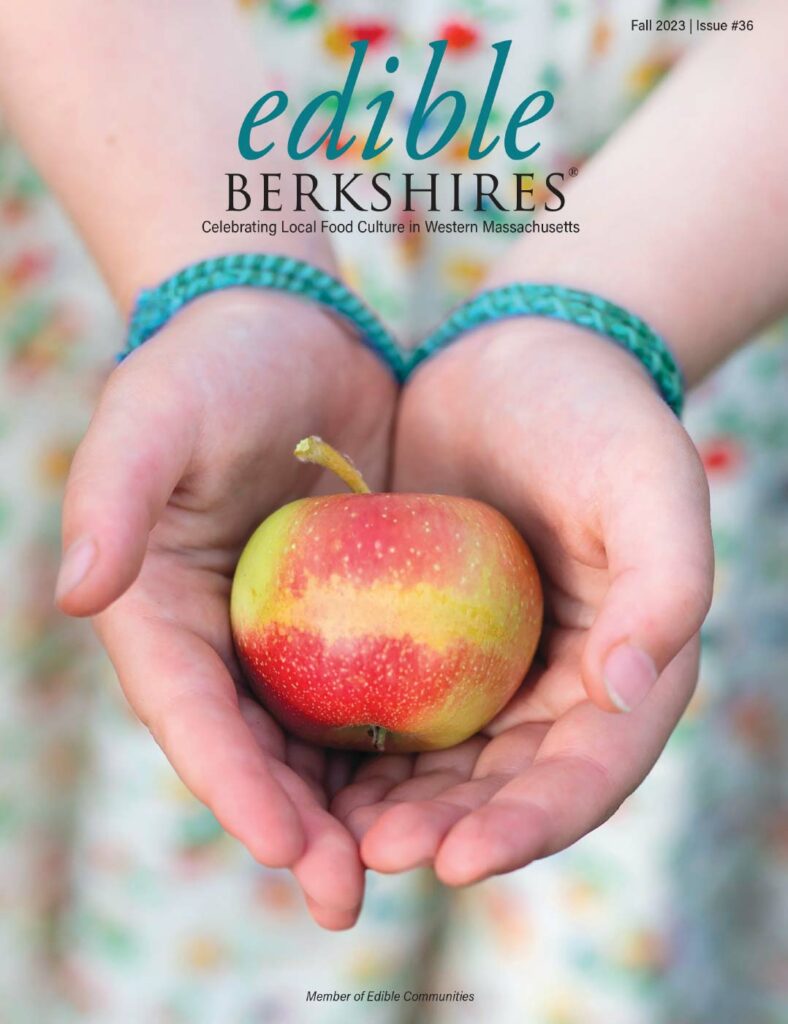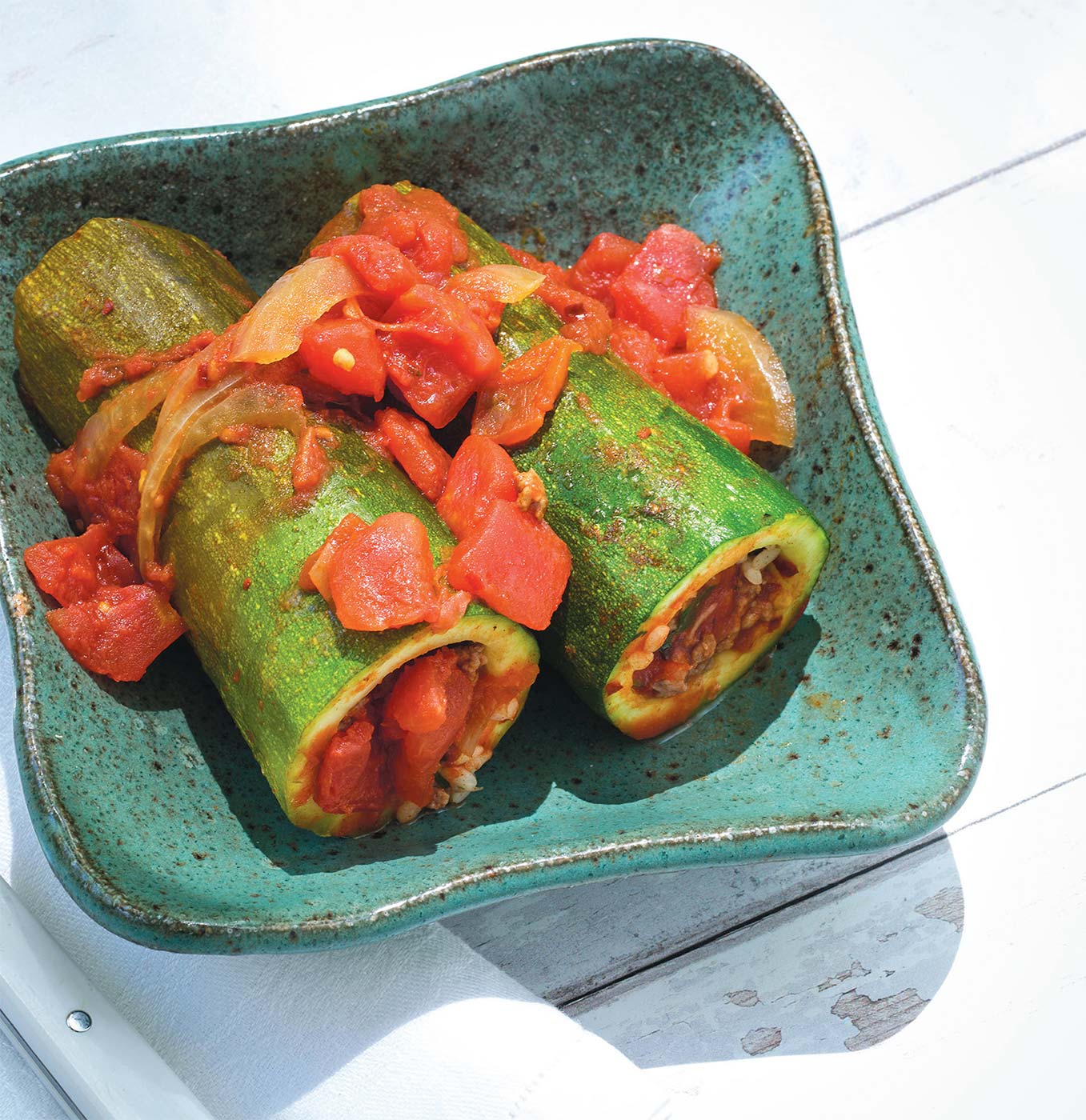The sweetest thing about spring foraging is being in the woods together as the earth comes back to life.
For my dad and me, the sweetest thing about spring foraging is being in the woods together as the earth comes back to life. We relish those first breaths of warm air; the fragrance of open earth and matted leaves; the sight of ramp babies punching their way through foggy patches of snow; tender nettle leaves still low to the ground; and tight little fiddleheads starting to show their sheen.
In mid-spring come the first flowerings of trout lily, trillium, and wild thyme; the elusive morels veiled in horsetail or leaf litter; plump fiddleheads ripe for taking; the way stinging nettles prick you sometimes even with gloves; and the sweet smell of ramps on the air after a rain.
And then, in June’s warmth, when all the leaves have unfurled, come bursts of red and orange on oak trunks, the prized chicken of the woods mushroom, joined by the snow white of oyster mushrooms on fallen logs, wild mustard flooding the trail sides, and deer jumping through the fern groves just over there.
For us, spring foraging is also about memories of seasons past with our mentor and neighbor, the late Eddie Saldo, known affectionately to us as Father Nature. He’s with us when we split off on our own, whistling when we’ve found a patch of this or that, the bird song all around us. So if we don’t find any morels, it’s no big deal, or if I can’t recall the Latin name for saddleback polypores, dad probably will. Here’s a sampling of what we—and you—can hope to find on foraging adventures.

DANDELION GREENS
You don’t have to go far in the woods to find dandelion greens. Look for plants growing in full shade with healthy-looking clutches of leaves and cut the entire plant just below soil level. Dandelions growing in shade will be more tender and less bitter than their sun-drenched brethren. By the time plants send up flower stalks, think no more about the greens. What you want now is the flower, a sweet treat to pop in your mouth or into a salad. You can gather tons of them to make fritters or even dandelion wine. And if you like dandelion tea, dig up the roots, chop and dry them in a food dehydrator, and steep. But leave some for the bees!

RAMPS
Finding a new ramp patch or returning to the ones I know never ceases to be a wondrous and exciting sight for me. Vibrant green leaves—sometimes hundreds of them—shine freshly on purple stems that disappear below soil to ivory white bulbs. If you can’t see ramps, use your nose, especially after a rain: The air is filled with the smell of garlicky leeks. Ramps like clearings in the woods with moist soil and decent sunlight. They often grow close to nettles and fiddleheads, so keep your eyes peeled. For the longevity of the plants, some folks only harvest their leaves, but we like to take a few bulbs by lifting them carefully from the soil and gently disentangling them from the root system. Take only what you need and just a few ramps from each patch; step lightly within the patch. Ramps are great sautéed with butter and salt, grilled or fried, or blended into a simple pesto. The bulbs are easily pickled.
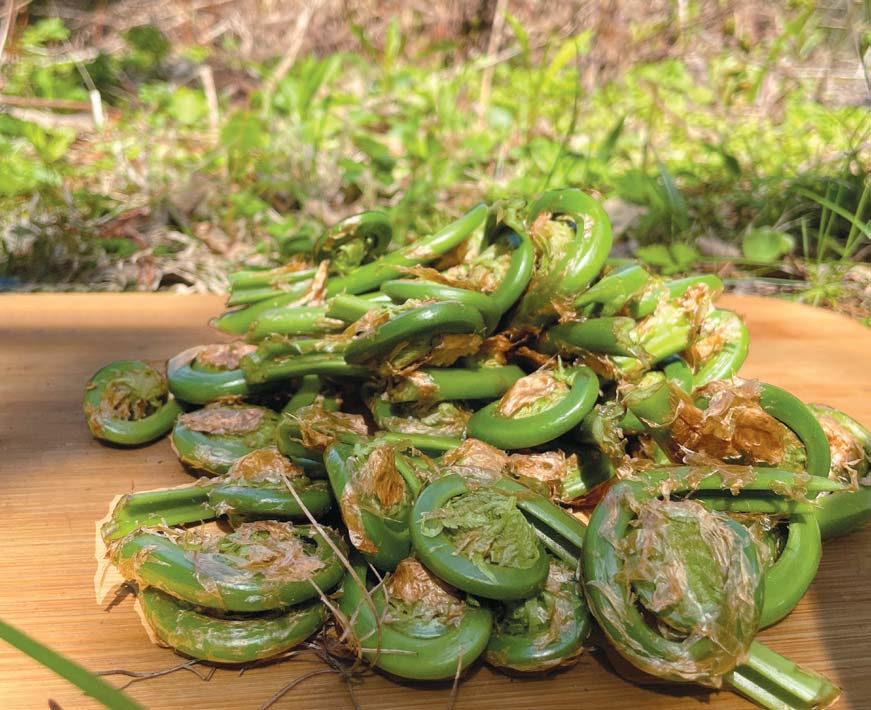
FIDDLEHEADS
The majestic spiral shape of a fiddlehead is a wonder of the perfection of nature. Look for nice plump and shiny green furls. They emerge in a crown at the center of last year’s ostrich ferns. Leave some to open and grow into ferns. The most common poisonous look-alike is another type of fern with a fuzzy white exterior. Fiddleheads should be shucked of their tissue paper–like shells and briefly blanched to make them more digestible. They’re great sautéed and dropped into salad as well as pickled in vinegar and olive oil.

MORELS
The elusive morel, king of spring, has a rich yet mild flavor and delicate texture. Mostly camouflaged in leaves, morels allow themselves to be seen by only the most selective and focused eye, usually when daytime temperatures get up to 70 degrees and nighttime doesn’t drop below 45 to 50. They let us find them in sand, around moss, on recently disturbed or burned grounds, or around old or recently dead elm trees and fruit trees. When spotting a morel, stop dead in your tracks and scan under and around your feet to make sure you don’t step on any. They have one poisonous lookalike called the false morel that looks like an old squashed brain with more red and purple coloring than the yellows, tans, and grays of the real thing. Morels dry quite well, and I think they’re best simply sautéed with butter and salt, maybe with a splash of cream. Some other mushrooms of edible interest that come up as spring progresses are: chicken of the woods, oyster mushrooms, dryad’s saddle, turkey tails, wood ears, boletes, and shaggy manes.
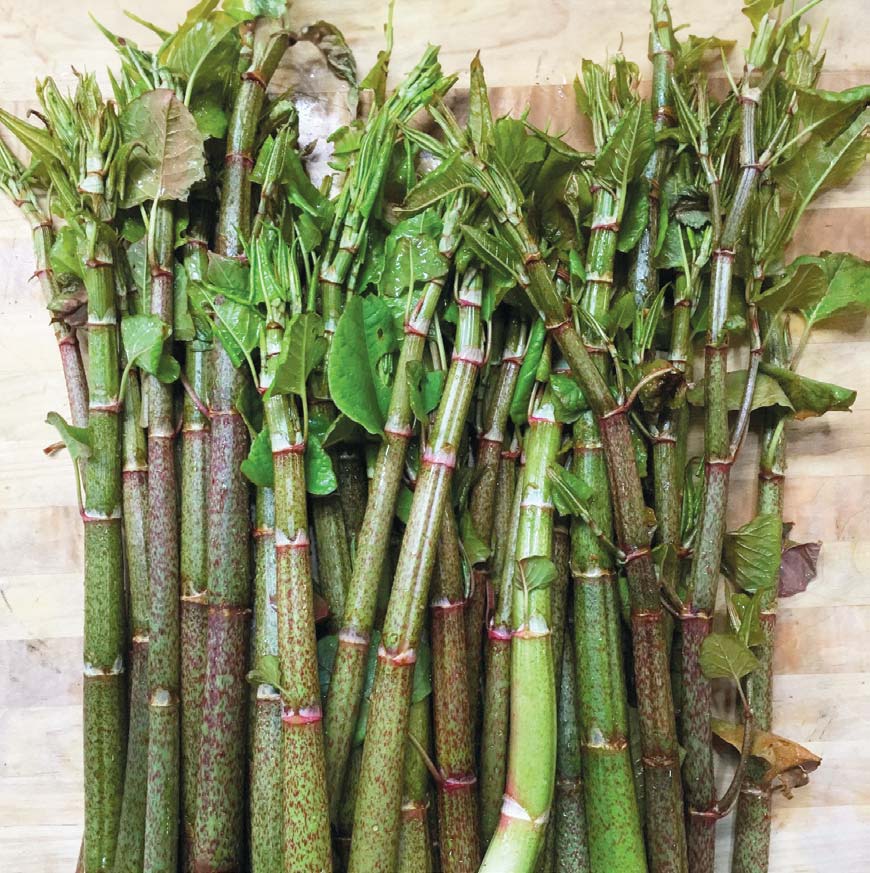
JAPANESE KNOTWEED
This invasive is bamboo’s distant cousin and it grows tall, too. Look for knotweed around riverbanks, wetlands, depressed wet spots, or at the edge of woodlands. When they’re just coming up out of the ground at two to four inches tall, the tender stalks and little leaves are tart and reminiscent of an artichoke heart when lightly blanched, sautéed, or preserved in olive oil and vinegar. Even when they’ve sprouted up to 12 inches, the stalks can be peeled and then slowly braised in stock and butter until tender. If you want tender young sproutlings throughout spring and summer, cover the patch with a tarp or an old sheet to limit growth.
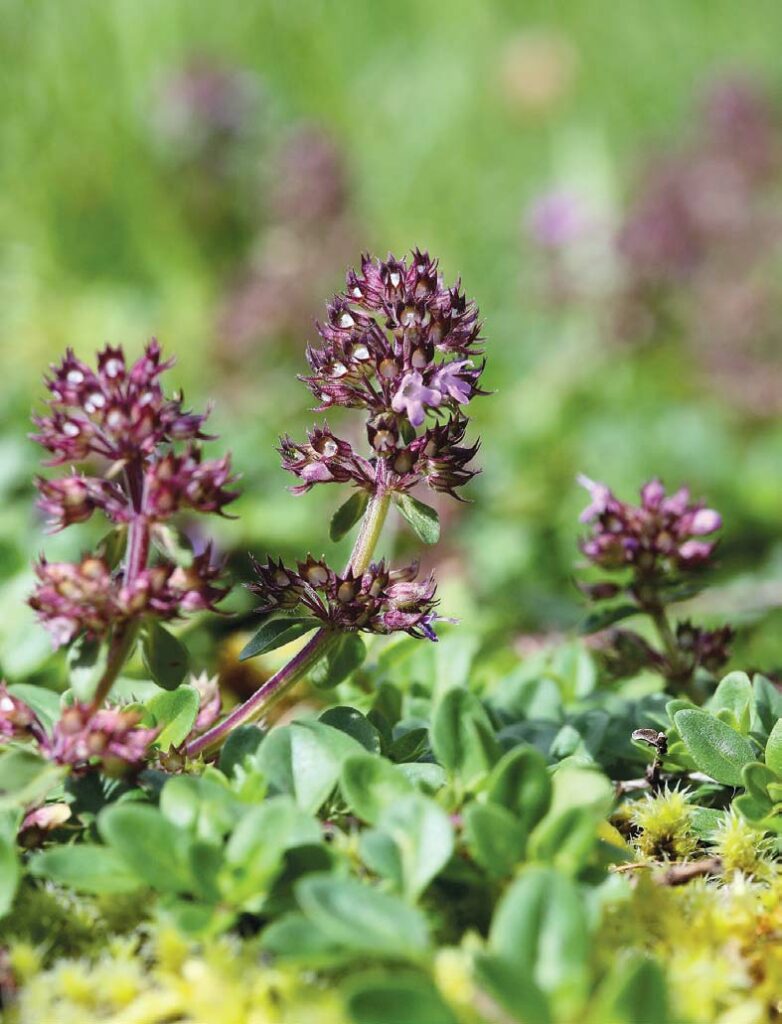
WILD THYME
My memory of wild thyme is linked forever to a hillside where I hunted morels for years, carpeted by the flowering, fragrant herb, and bees foraging the nectar. Wild thyme likes open areas and is easy to spot when it’s in lavender-colored flower, which to me is the best time to harvest. Use a sharp scissor to cut the stems, leaving at least an inch of the plant to regrow. Wild thyme is used to season meat, poultry, and vegetable dishes and, when dried, for tea.
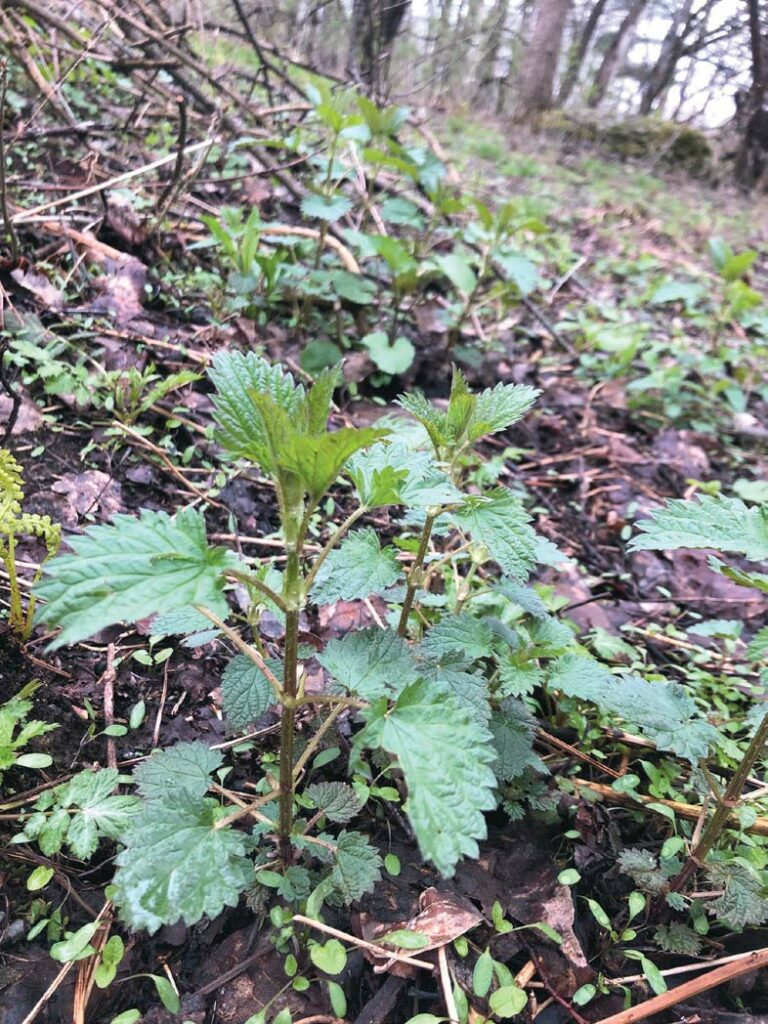
SPRING WILD LEAFY GREENS
Nothing says spring like wild greens. They’re early and easy to spot. Here are a few choice ones that are great to make a salad from:
Young garlic mustard: Pungent, sweet, a bit spicy. It’s mild when it’s young, but I enjoy the pungent kick after it’s flowered. The leaves are perfect in a salad, or dry the whole plant and grind to make a mustard powder.
Stinging nettle: Make sure to quickly blanch these to remove the sting. Earthy and herbal flavor. Great for steeping into tea or sautéing.
Plantain: It’s everywhere! When young, it’s great raw. When leaves are bigger it can be quickly blanched in tamari.
Watercress: Grows on sides of streams year round but is especially mild and tender in the spring. It’s peppery and crunchy!
AND THEN THERE’S…
Trout lily: Splotchy leaves are up early, flowers arrive in late spring, and root bulb is also edible.
Purslane: I go no further than my vegetable garden for this lemony succulent in late May.
Bishop’s-weed: Also called ground elder or goutweed, it is an invasive but edible plant when leaves are young.
Spruce tips: The new bright-green tips of spruce branches are versatile cooked and as raw snacks with an herby-citrusy flavor.
Burdock root: Dig up first-year taproots to slice and fry like potatoes or sunchokes.
Violets: Leaves, flowers, stems all edible from early to mid-spring, with new tender greens post-flowering.
Sweet or dame’s rocket: Produce super early and abundant sweet greens with phlox-like flower tops later in spring. All parts are edible, but Dad likes the leaves the best.
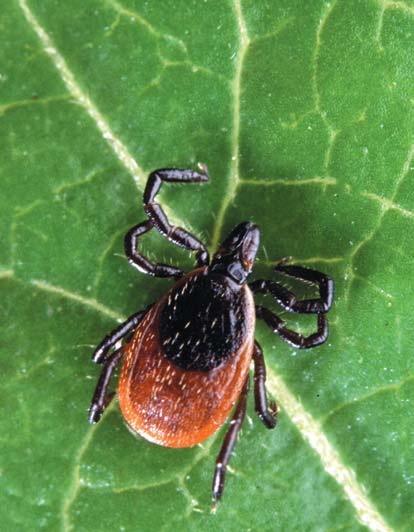
TICK WARNING
Remember that ticks are abundant in the Berkshires, so when you’re foraging, please take precautions! In the spring, ticks are tiny so you need to be extra vigilant.
- Learn to identify deer ticks and other ticks that carry disease.
- Spray your clothes and exposed skin with tick spray that has DEET. Some people prefer a spray of tea tree oil. Don’t forget to spray your hat.
- Pull your socks around your pant legs.
- When you get home, immediately toss clothes into a hot clothes dryer and check your body carefully.



